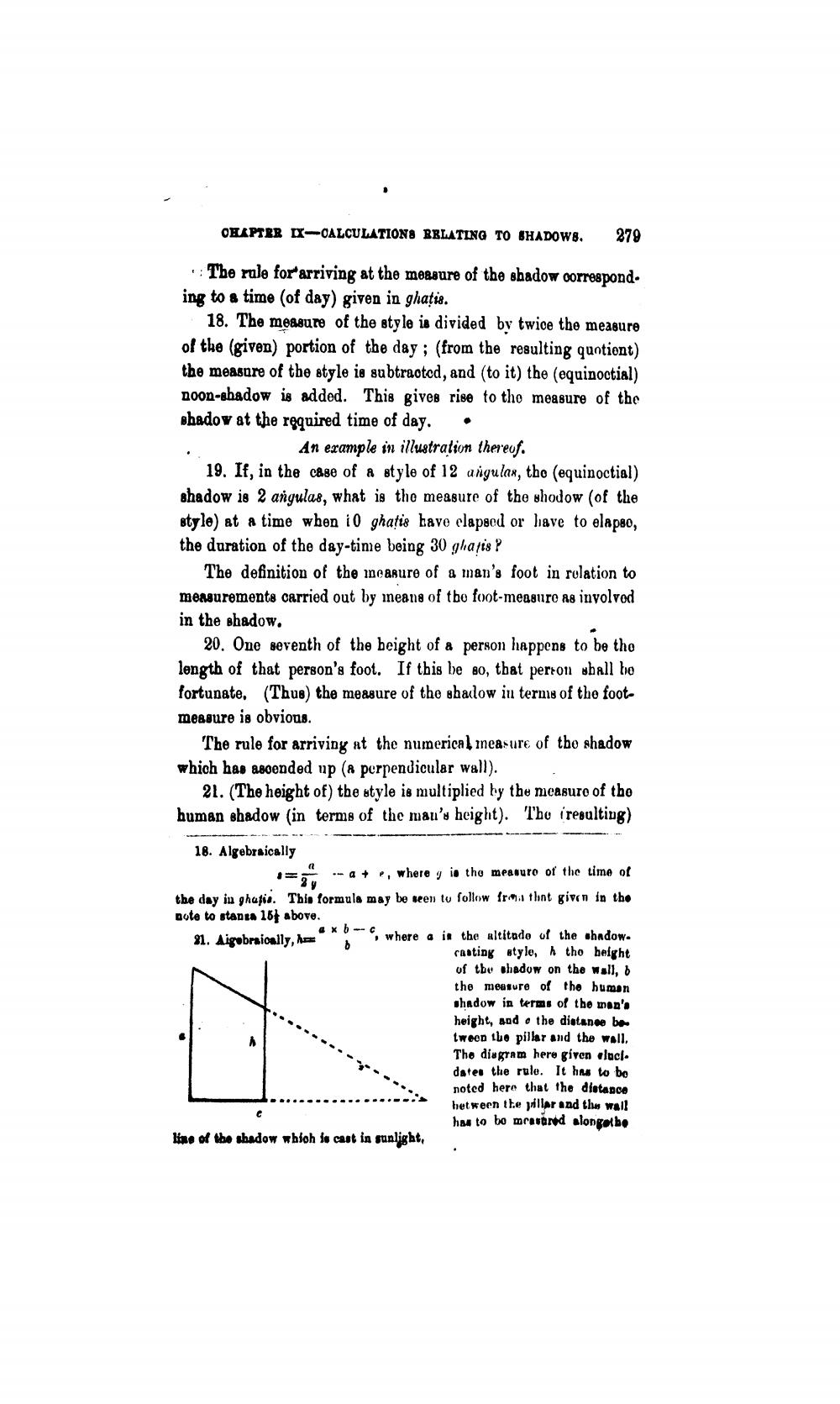________________
CHAPTER X-CALCULATIONS RELATING TO SHADOW8.
279
The rule for arriving at the measure of the shadow correspond. ing to a time (of day) given in ghatis.
18. The measure of the style is divided by twice the measure of the (given) portion of the day ; (from the resulting quotiont) the measure of the style is subtracted, and to it) the (equinoctial) noon-shadow is added. This gives rise to the measure of the shadow at the required time of day. .
An example in illustration thereof. 19. If, in the case of a style of 12 angular, the (equinoctial) shadow is 2 angulas, what is the measure of the shodow (of the style) at a time when i ghatis have clapeod or have to elapso, the duration of the day-time being 30 gharis?
The definition of the ineasure of a man's foot in rolation to measurements carried out by means of the foot-measure as involved in the shadow.
20. One seventh of the beight of a person happens to be the length of that person's foot. If this be so, that person shall bo fortunate. (Thus the measure of the shadow in terms of the footmeasure is obvious.
The rule for arriving at the numerical measure of the shadow which has asoended up (& perpendicular wall).
21. (The height of) the style is multiplied by the measuro of tho human shadow (in terms of the mau's height). Thu i resulting)
18. Algebrsically
12 .a + , where y in the measure of the time of the day in ghafis. Thin formula may be seen tu follow frm thnt given in the bute to stanza 161 above. 91. Aigebraically, h hosil
*. * **, where a in the ultitado of the shadow.
casting stylo, h the height of the shadow on the wall, o the measure of the human shadow in terms of the man's height, and a the distance be tween the pillar and the wall. The diagram here given clacl. dates the rule. It has to be noted here that the distance between the pillar and the wall
has to be measured alongelbe time of the shadow which is cast in sunlight,




